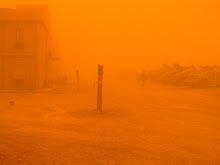By: Courtney Kube and Alex Johnson
Suicide rates among active-duty U.S. military personnel are continuing to rise even as the Defense Department dedicates more resources to identifying troubled service members and getting them the help they need, NBC News has learned.
At least 125 soldiers were confirmed to have killed themselves in 2008, compared with 115 in 2007, 102 in 2006 and 87 in 2005, a senior defense official told NBC News. Last year’s figure is likely to rise even higher, because the Army is investigating at least 17 other deaths as possible suicides.
The Marine Corps reported 41 possible suicides last year, up from 33 in 2007, a defense official said, while the Navy and the Air Force saw smaller increases. The officials, all of whom spoke on condition of anonymity, disclosed the figures ahead of a public roundtable scheduled for Thursday to discuss suicides in the military.
According to figures compiled by the U.S. Centers for Disease Control and Prevention, the civilian suicide rate was 11 per 100,000 Americans in 2005, the last year for which fully adjusted national figures are available.
Officials said the Marine Corps’ rate was 19 per 100,000 Marines in 2008, while for the Air Force, it was 11.5, and for the Navy, it was 11.3. All three rates represented statistically significant rises over the same figures in 2007.
The officials did not provide a comparable breakdown for suicides in the Army, but the ratio works out to roughly 18 per 100,000 soldiers in 2008, pending open investigations and accounting for differing methods of counting the overall active-duty Army force.
And exact comparisons could be misleading because the makeup of the military forces does not mirror that of American society as a whole. But among the segment of the civilian population that most closely reflects the demographic makeup of the military — males ages 18 to 24 — about 19.8 Americans committed suicide per 100,000 in 2005, according to CDC figures.
Problem difficult to get a grip on
While the active-duty military force is expanding, the rate of suicides is growing even faster among all four services, a phenomenon that has alarmed defense officials.
“They’ve lost buddies,” said Army Brig. Gen. Loree K. Sutton, director of the Defense Centers of Excellence for Psychological Health and Traumatic Brain Injury. “They’ve been exposed to the most corrosive environment known to warfare — physically, psychologically, spiritually and morally.”
Maj. Gen. Mark A. Graham, commanding officer of the Army base at Fort Carson, Colo., said the military still suffered from a shortage of behavioral health professionals, even thought strides have been made in the past year. The Army, for example, has allocated $50 million to study the causes of military suicides and to bolster its programs to identify and help troubled soldiers.
The American Psychological Association reported in 2007 that there was a 40 percent vacancy rate in active-duty psychologists in the Army.
“With the stress that our soldiers and families are under, it’s taken a toll,” Graham said.
Fighting the stigma
A major problem is the stigma attached to service members who seek counseling and other mental health assistance, said Graham, whose youngest son, Kevin, 21, committed suicide in June 2003 as an ROTC cadet.
Eight months later, Graham was considered retiring when his other son, Jeff, was killed by an improvised explosive device in Iraq.
Until that point, Graham said, he himself thought “it was a sign of weakness” for a soldier to acknowledge emotional trauma.
But “guess what?” he said. “I actually found out what I was putting my family through.”
The epidemic of suicides in the military is a wake-up call, said Graham, who with his wife is now active with the Suicide Prevention Action Network.
“We could either let this tragedy be the book of our life, or we could let it be a tragic chapter in the book of our life,” Graham said. “And we’ve chosen the second, to make these [just] sad chapters in our life, but to make the overall book hopeful.”
“The message is it’s OK to ask for help,” he said. “It’s a sign of strength and not weakness to come forward.”
Wednesday, January 28, 2009
Subscribe to:
Post Comments (Atom)




No comments:
Post a Comment